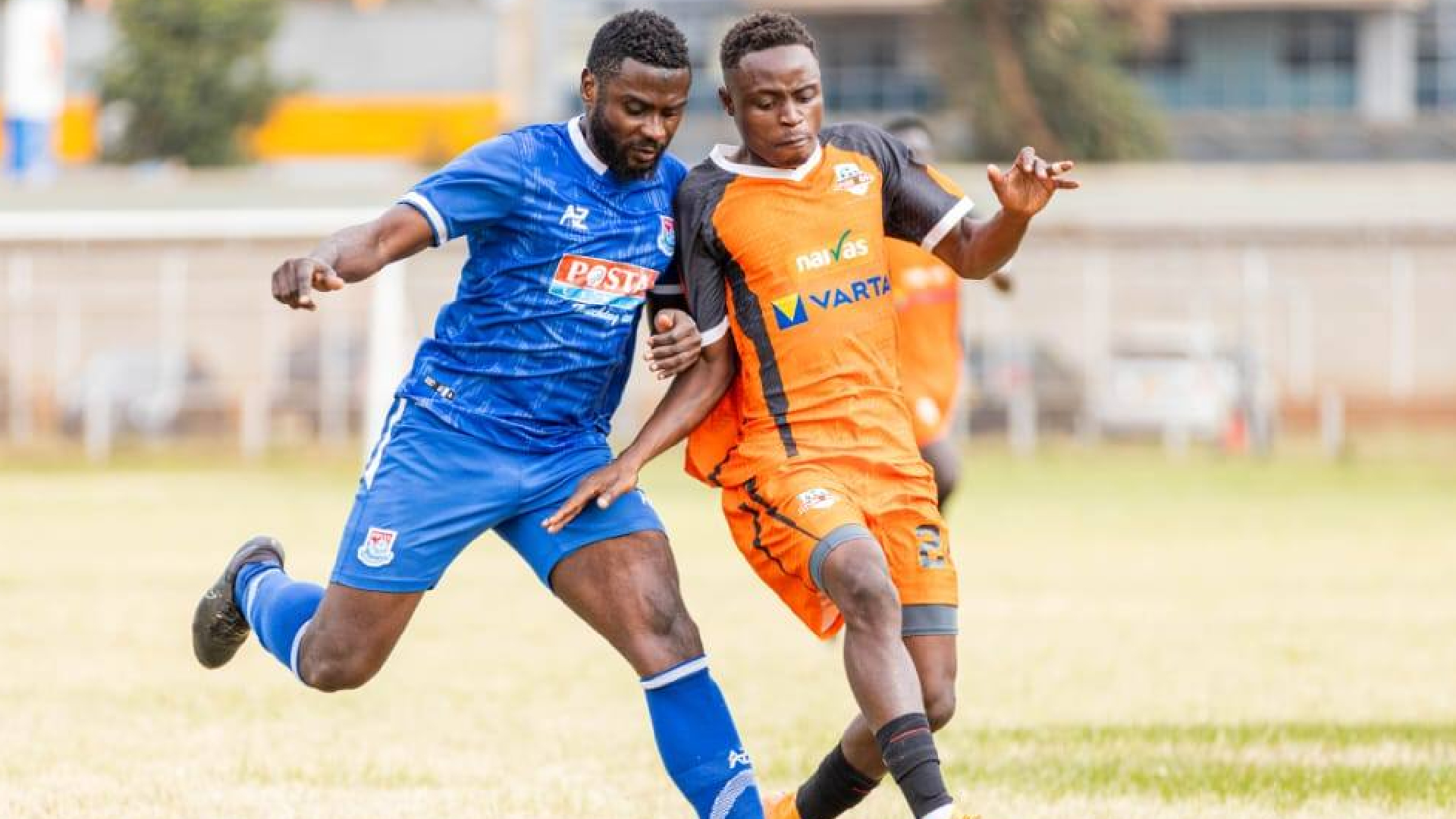Posta Rangers claimed a crucial 2-0 victory over Naivas FC in the first leg of the FKF Premier League promotion/relegation playoff at Thika Stadium.In a match defined by fine margins, the top-tier side showcased the composure and opportunism that often marks the difference between first-division and second-tier football, punishing defensive errors in decisive moments.Follow our WhatsApp channel for more newsThis is how the Mailmen won the match.Base structure and possession strategyCoach Sammy ‘Pamzo’ Omollo remained faithful to his preferred 4-2-3-1 base formation, a shape that has offered Rangers both defensive stability and attacking flexibility all season.##NAJAVA_MECA_8997001##Crucially, they welcomed back Kevin Ouru in goal, whose communication provided added reassurance to the backline.In possession, Rangers fluidly shifted into a 4-2-4 attacking structure. Boniface Mwangemi, the left back, was especially adventurous, overlapping aggressively to create wide overloads and stretch Naivas’ defensive block.On the opposite side, Bernard Ondiek was more conservative, forming a back three with the two centre-backs during attacks.This asymmetrical approach was deliberate—while Mwangemi added width and dynamism, Ondiek’s reserved role helped form a “rest defence” of three to counter Naivas’ transitions, especially since the visitors often tried to exploit the space left behind by the former Bandari man.Posta Rangers strike twice to take first leg advantage over NaivasPosta Rangers’ build-up phase featured varied exit strategies, an aspect that showcased their tactical maturity.At times, they played through Naivas’ first line via the pivots Patillah Omotto and Vincent Wasambo, looking for progressive ground passes through central lanes.However, Naivas adopted a disciplined 4-4-2 defensive shape that focused on closing these passing lanes and screening access to the midfield pivots.When central progression was denied, Rangers moved to their second strategy—circulating the ball around Naivas’ block.The pattern often saw centre-backs playing wide to fullbacks, who found wingers before feeding the ball back inside.Naivas’ narrow defensive structure conceded these wide spaces, giving Posta Rangers’ wide men more time and angles to deliver, though these wide build-ups were less immediately threatening since they often led to delivery zones far from goal.Their final strategy involved going direct: lofting the ball over the Naivas defensive line for Felix Oluoch to chase.While these passes had limited success due to Oluoch often being isolated, the threat forced Naivas to defend deeper at times and kept them wary of the ball over the top.Brian Otieno: The link between linesA critical figure in Posta Rangers’ possession game was Brian Otieno, who operated as the attacking midfielder.Otieno’s intelligence and positional flexibility allowed Rangers to create overloads both centrally and on the flanks.He repeatedly dropped deeper to receive from centre-backs when the pivots were blocked, offering an alternative exit from the first phase of build-up. In wide areas.##NAJAVA_MECA_8999832##He formed triangles with the fullback and winger, ensuring Rangers could circulate the ball effectively and unbalance Naivas’ defensive shape.Notably, Naivas’ defensive midfielder often failed to track Otieno’s movements into deeper areas, giving him both space and time to receive, turn, and drive forward.Otieno’s dribbling ability also added a destabilising element.By carrying the ball and drawing defenders, he forced Naivas’ backline to shift and react, opening spaces for teammates to exploit.His work between the lines was crucial in sustaining Rangers’ possession dominance and territorial control.Set-piece approach and defensive disciplinePosta Rangers also demonstrated organised preparation in set-piece situations.Offensively, they crowded the six-yard box to disrupt Naivas’ defensive marking and create chaos for the goalkeeper, targeting deliveries into the heart of the danger area.Defensively, they employed a mixed approach: man-to-man marking for corner kicks to handle specific aerial threats, while opting for zonal marking with a high defensive line for other set-piece scenarios.Gor Mahia intensify pursuit for Harambee Stars goalkeeperThe highline zonal approach is particularly effective in catching opponents offside after first contact and allows defenders to attack the ball aggressively in defined zones without getting dragged away by decoy runners.Goals from defensive errorsDespite Rangers’ methodical possession, both goals came not from complex build-up patterns, but from capitalising on Naivas’ lapses in concentration—a reminder of the cruel efficiency often needed in knockout football.The first goal emerged from a long clearance that Naivas’ backline failed to deal with under pressure from Oluoch.A mistimed header back to goalkeeper Eliud Emase was pounced on by Oluoch, who calmly lobbed the stranded keeper.The second goal originated from a delivery from the left wing—again exploiting the momentary lapse in Naivas’ defensive shape.Oluoch was alert to the opportunity, finishing clinically inside the box while the defenders hesitated.Angry Gor Mahia fans demand Zico’s sacking after Mozzart Bet Cup defeatThese moments underlined the key difference between top-tier and second-tier competition: Posta Rangers punished errors with ruthless precision, while Naivas, despite spells of solid play, failed to capitalise on Rangers’ own minor mistakes.Defensive shape and game managementWithout the ball, Posta Rangers maintained a disciplined defensive 4-4-2/4-5-1 structure that protected their lead.Ondiek’s conservative positioning ensured they always had numerical security in defensive transitions, denying Naivas space to exploit.Rangers’ game management was evident in their varied tempo.When ahead, they slowed the game down, maintained possession in safer zones, and limited Naivas’ opportunities to build rhythm.Tusker’s season in retrospect: Breakout striker, flickering hopes and self-inflicted woundsFor Naivas, the second leg now represents an uphill battle.They will need not only to overturn the 2-0 deficit but to show the level of concentration and defensive organisation required at this level.Posta Rangers, meanwhile, will enter the second leg knowing they have a buffer and the experience to manage the tie—highlighting the often decisive gap between top-tier and second-tier football in such high-stakes encounters.

